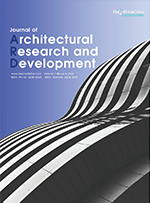Analysis of the Architectural Design Talent Development Direction by Investigating the Employment Status of Architectural Design Graduates
Abstract
Based on a comprehensive investigation of the employment status of architectural design graduates at a certain university, this paper analyzes the correctness of the talent development direction of architectural design in hopes of providing a valuable reference for further teaching reform and strengthening school-enterprise collaboration. The research results show that architectural design is the main choice of graduates, accounting for as high as 63%, and traditional architectural design skills continue to be in demand in the market. Employment in fields such as interior design, BIM design, and green architecture is also included. The distribution of job positions for graduates is mainly in the areas of scheme design assistants and construction drawing design, requiring software operation, communication, scheme design, and construction drawing skills. This paper also proposes talent development measures such as optimizing the curriculum, strengthening faculty construction, and deepening school-enterprise collaboration, in order to improve the quality of talent development and the competitiveness of graduates.
References
Ahmed S, Zaman K, Islam T, 2015, Architectural Education for Sustainable Development: A Case Study of a Private University in Bangladesh. International Journal of Sustainability in Higher Education, 16(4): 460–472.
Trujillo DM, 2019, Building a Sustainable Future: Integrating Climate Change into Design Education. International Journal of Sustainability in Higher Education, 20(1): 20–35.
Huang Z, Wu X, 2019, Exploring the Necessary Competencies of Architects in China to Meet the Challenges of Future Sustainable Design Practice. Sustainable Cities and Society, 44: 656-665.
Heslop P, Lascelles D, 2013, Interdisciplinary Architectural Design Education, in Design Education for Tomorrow’s Professionals, 166–175. Springer, Berlin.
Koster R, 2015, Exploring the Intersection of Design Thinking and the Maker Movement to Promote Innovation Education in Architecture. Journal of Architectural Education, 69(1): 138–143.

